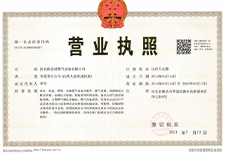
7 月 . 25, 2024 12:51
Back to list
Understanding the Importance and Functionality of Pressure Relief Valves in Safety Systems
Understanding Relief Valves Essential Components in Pressure Management
Relief valves are critical devices used in various industrial applications to manage and regulate pressure within systems, ensuring safety and efficiency. When pressure levels exceed a predetermined limit, these valves act as a failsafe, preventing catastrophic failures and maintaining operational integrity. In this article, we will explore the function, types, and importance of relief valves in different industries.
Function of Relief Valves
The primary function of a relief valve is to protect equipment and piping systems from excessive pressure. When pressure builds up beyond a safe threshold, the valve automatically opens to release the excess pressure. This process not only protects the equipment from damage but also minimizes the risk of explosions or other hazards associated with over-pressurization. Once the pressure returns to a safe level, the valve closes, ensuring that the system continues to function effectively.
Relief valves are finely tuned to respond to specific pressure levels. They are typically set to open at a certain pressure, known as the set pressure. The mechanism of the valve allows it to rapidly react to changes in pressure, providing a quick response when needed. This reliability is crucial in applications where pressure fluctuations can occur unexpectedly.
Types of Relief Valves
There are several types of relief valves, each designed for specific applications and operating conditions. The most common types include
1. Spring-loaded Relief Valves These are the most widely used type, consisting of a spring mechanism that holds the valve closed until the set pressure is reached. Once the pressure exceeds this threshold, the spring compresses, allowing the valve to open.
relief valve

2. Pilot-operated Relief Valves These valves use a smaller pilot valve to control the operation of a larger main valve. This design allows for more precise control of pressure and is often used in high-pressure systems.
3. Safety Relief Valves These valves are designed to release pressure in case of emergency, often found in systems involving steam or gas. They provide quick relief to prevent equipment failure or accidents.
4. Non-Return Valves While not traditional relief valves, these devices prevent backflow in systems and can assist in controlling pressure levels by ensuring that fluids only flow in one direction.
Importance in Various Industries
Relief valves play an indispensable role in numerous industries, including oil and gas, chemical manufacturing, and water treatment. In the oil and gas sector, for instance, relief valves are essential in pipeline systems where pressure must be monitored closely to prevent leaks or bursts. In chemical manufacturing, where volatile substances are handled, these valves help mitigate risks associated with pressure fluctuations that could lead to explosive reactions.
Moreover, in water treatment facilities, relief valves protect pumps and piping systems from the dangers of hydraulic shock or pressure surges, ensuring smooth operations. The ability to maintain safe pressure levels contributes significantly to the overall efficiency and reliability of industrial processes.
Conclusion
In conclusion, relief valves are vital components in pressure management systems across various industries. They provide essential safety measures by preventing excessive pressure build-up, thereby protecting equipment and ensuring operational safety. Understanding the function, types, and applications of relief valves can help industries optimize their processes and enhance their safety protocols. As technology continues to advance, the design and functionality of relief valves will likely evolve, further improving safety and efficiency in industrial operations.
Latest news
-
Unlocking The Quality Gas Pressure ReducersNewsNov.01,2024
-
The Role of Gas Pressure Reducing StationsNewsNov.01,2024
-
The Importance and Functionality of Safety Relief ValvesNewsNov.01,2024
-
The Essential Role of Safety Valves in Natural Gas ApplicationsNewsNov.01,2024
-
The Essential Role of Gas Pressure RegulatorsNewsNov.01,2024
-
Enhance Your Premium Gas FiltersNewsNov.01,2024

